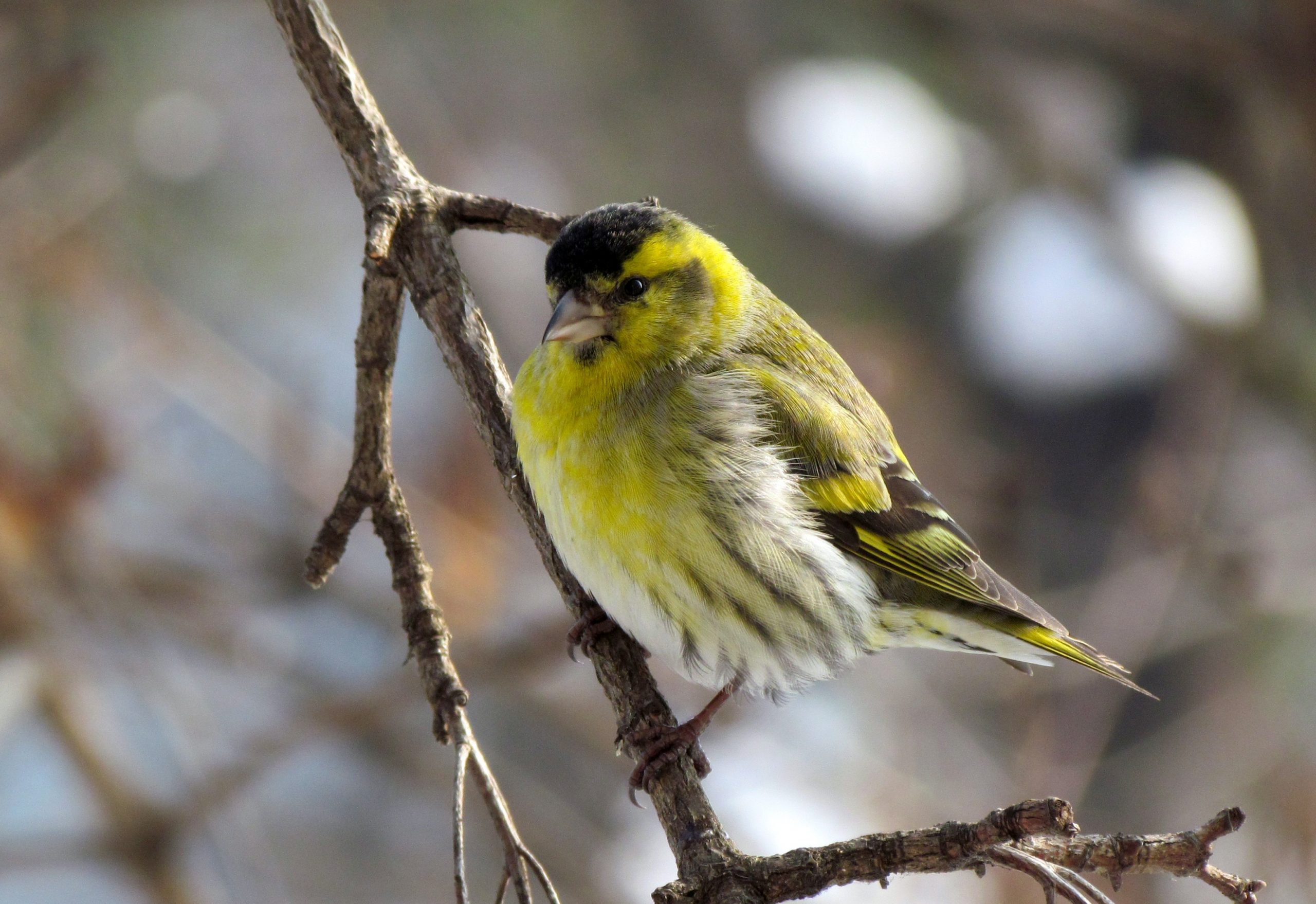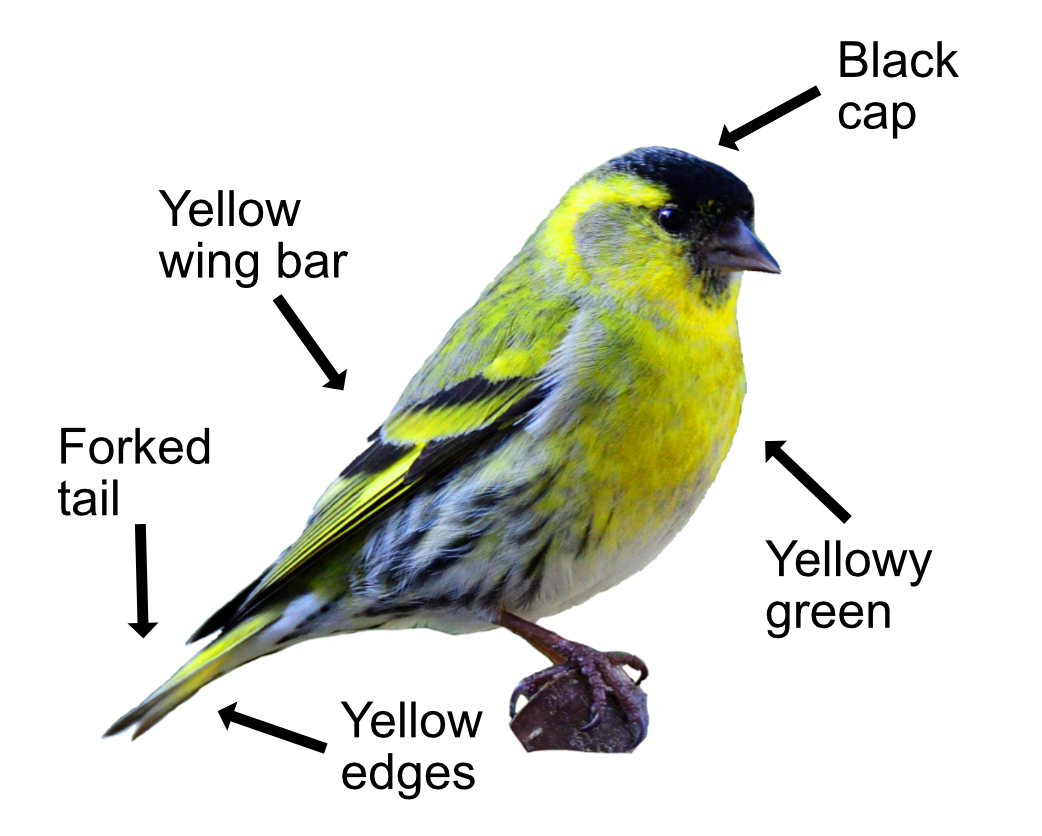
Siskins love conifer forests, especially the ones in Northern Scotland. They are a high-viz bird, like the Yellowhammer and Yellow Wagtail, with a distinctive black stripe on their heads to make it easy to tell them apart.
Siskins are a tiny, slender finch, smaller than a Greenfinch. They are a streaky yellowish green with a short, distinctly forked tail that has yellow edges. They have a yellow rump and yellow wing bars. The male has a black bib and crown. The female is greyer and more streaked than the male. Their flight is light and bouncy. They have several calls: a loud "tsuu!", a ringing "tszing", and a sweet twittering that ends with a wheeze like a Greenfinch. Who could not like the Siskin?

They eat pine, birch, and alder seeds and, at a push, will enjoy peanuts from a bird feeder. They feed near the tops of trees and are very agile, hanging on the thinnest of twigs to reach their food. They will also eat insects in the summer for a bit of added protein.
Siskins will nest in early spring somewhere there is a good crop of spruce seeds. If these are in short supply, they will delay nesting until May. The female builds a cup-shaped nest from conifer twigs, grass, heather and moss. She lays 3-5 eggs, which she incubates until they hatch 12 days later. Both mum and dad will feed the youngsters who can fly after 13 days. There are usually 2 broods.
They are a common resident with 400,000 pairs in Britain, though more concentrated in Scotland where there are lots of conifer forests. They can form large flocks in winter. They can be seen in the rest of the Britain as a winter visitor when northern birds move south and others come over from Europe. The planting of commercial conifer forests has certainly helped the Siskin.
Their Latin name is 'carduelis spinus' where 'spinus' is from the Ancient Greek 'spinos', a name for a now-unidentifiable bird, and 'carduelis' is Latin for 'goldfinch'. This makes it an unidentified bird a bit like a Goldfinch (which it is not). Some scientists need glasses. The English name is derived from the German 'sisschen' or 'zeischen' which was their name for the bird.